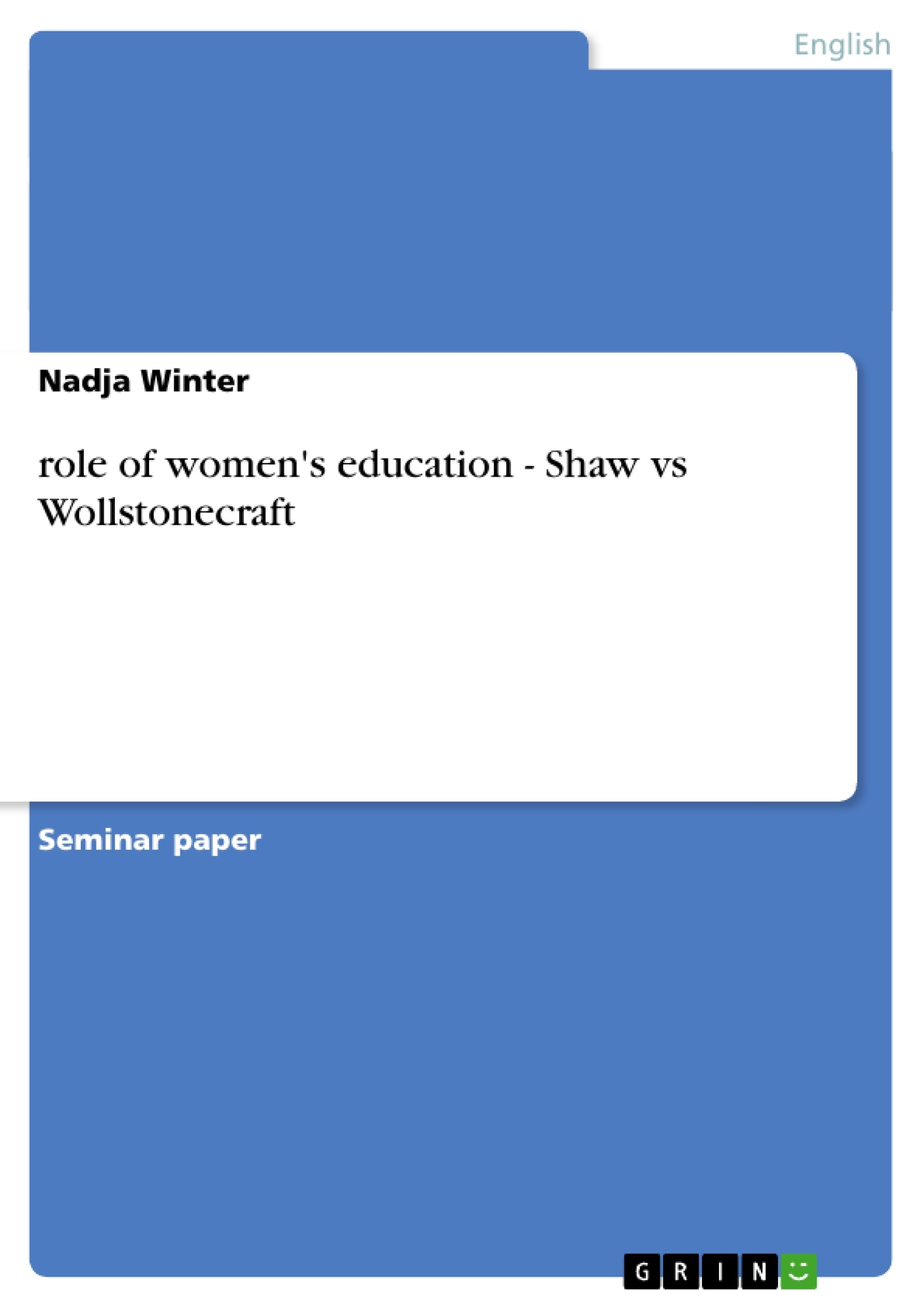Even a hundred years ago, the word “education” would have been rarely mentioned in connection with “women”. Heated discussions addressed questions such as how far women should be educated, and what education would mean for them. Women’s traditional and conventional tasks were generally seen in housekeeping, giving birth to many children, and to cater for the sexual needs of their husbands. This role model was based on the concept of the so-called one-sex model, in which the female sex did not exist at all, as people only thought of one human sex, the male sex. In contrast to modernity's formulation that men and women are "opposites", Thomas Laqueur proposed an early one-sex model in which women were seen as fundamentally the same, yet imperfect or failed, versions of men. They were said to be inferior, weaker, and more passive than their male counterparts. The status of the female sex could be compared to that of a slave, because women were totally – economically and physically – dependent on their fathers, and, later on, their husbands. Men saw the progressive development of women, and the female self-esteem, as a major risk for their own status and the system of patriarchy, which had been established by men throughout the past centuries. “[…] They were afraid that their wives might, if their value were recognized, become unruly and claim to be the heads of the household […].” Partly due to the fact that “by law everything a woman possessed became the property of her husband when she married, [which had] the effect [that women had] to hand over [their] property to some person or persons [even] yet unborn before her marriage”, this system forced women to be subjected not only to their husbands, but to all male family members. However, beginning with the period of Enlightenment in the late 18th century, the attitude towards the one-sex model gradually changed. More and more, people tried to distinguish between man and woman by referring to anatomic differences. The two-sex model started to emerge and claim a firm place in people’s minds, and the one-sex model was finally viewed as overcome. Yet, the declared differences between the two sexes did not manifest successfully. Hence, the one-sex model remained like a shadow looming over the gender issues. Nevertheless, the female sex gained power, and women began to claim their rights.
Inhaltsverzeichnis (Table of Contents)
- Introduction
- Main Part
- The story of Shaw's “Pygmalion” and its plot
- “Pygmalion” and the way of education
- Shaw's attitude towards women, female education and social problems
- Education in Great Britain in the 19th century
- Wollstonecraft's “A Vindication of the Rights of Woman”
- Wollstonecraft's attitude towards women's problems and the aspect of education in the “Vindication”
- Conclusion
Zielsetzung und Themenschwerpunkte (Objectives and Key Themes)
This paper aims to explore the role of women's education in George Bernard Shaw's "Pygmalion" and Mary Wollstonecraft's "A Vindication of the Rights of Woman," comparing and contrasting the authors' perspectives on female education and social problems. It examines the historical context of women's roles and education, particularly within the framework of the one-sex model and the transition to the two-sex model.
- Women's education and its impact on social roles
- The one-sex model and its influence on women's status
- The evolving understanding of gender and societal expectations
- The impact of economic factors on women's education
- The importance of education for women's self-esteem and autonomy
Zusammenfassung der Kapitel (Chapter Summaries)
The introduction explores the historical context of women's education in the 19th century, highlighting the traditional and conventional roles assigned to women and the prevailing one-sex model. It introduces the concept of the one-sex model and its implications for women's societal status. The paper then delves into the story of Shaw's "Pygmalion," examining the plot and characters, including the transformation of Eliza Doolittle and the role of education in her development. It analyzes Shaw's views on women's education and his attempt to challenge archaic social values. The paper then turns to Mary Wollstonecraft's "A Vindication of the Rights of Woman," discussing her views on female education, motherhood, sexuality, and marriage. It compares and contrasts Wollstonecraft's and Shaw's perspectives, highlighting their similarities and differences regarding women's roles and education.
Schlüsselwörter (Keywords)
Women's education, one-sex model, two-sex model, social roles, gender, societal expectations, economic factors, self-esteem, autonomy, "Pygmalion," Eliza Doolittle, Professor Higgins, "A Vindication of the Rights of Woman," Mary Wollstonecraft, George Bernard Shaw.
- Citar trabajo
- Nadja Winter (Autor), 2003, role of women's education - Shaw vs Wollstonecraft, Múnich, GRIN Verlag, https://www.grin.com/document/25205



